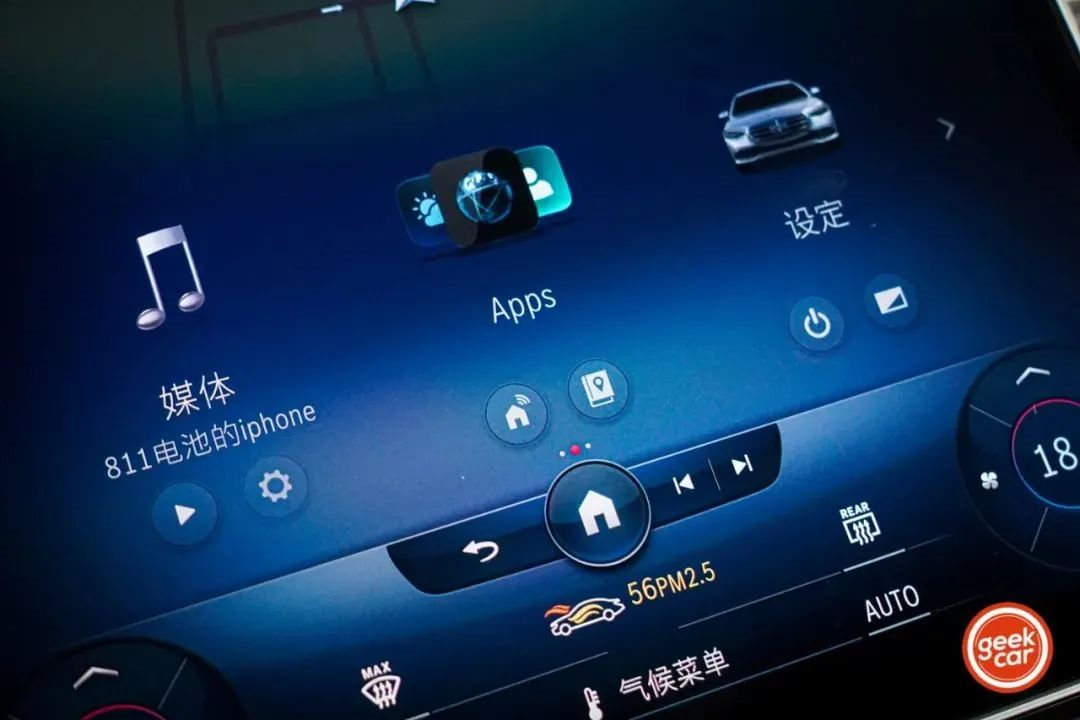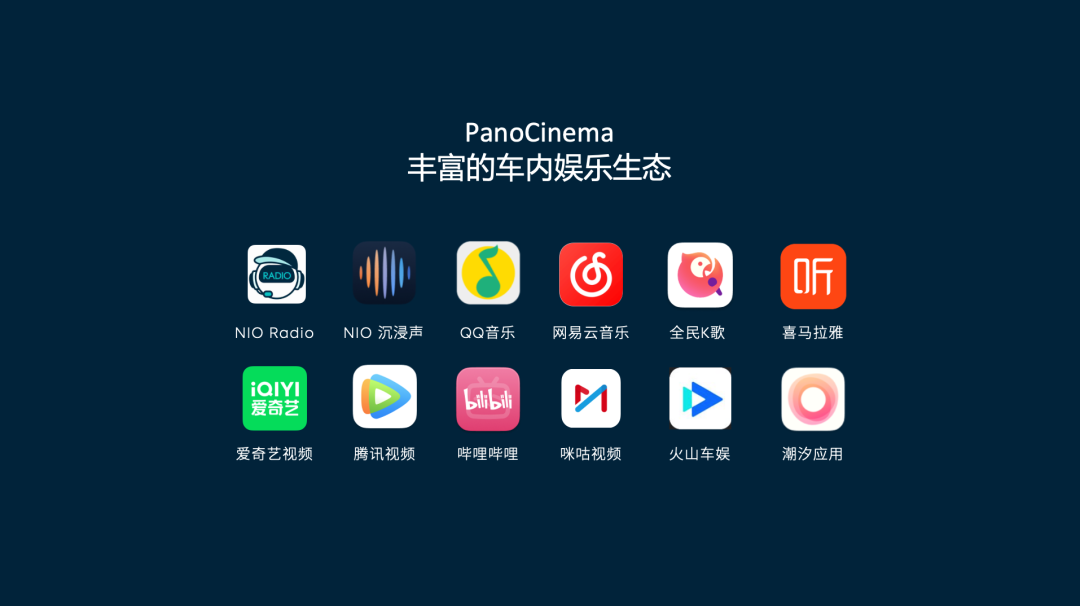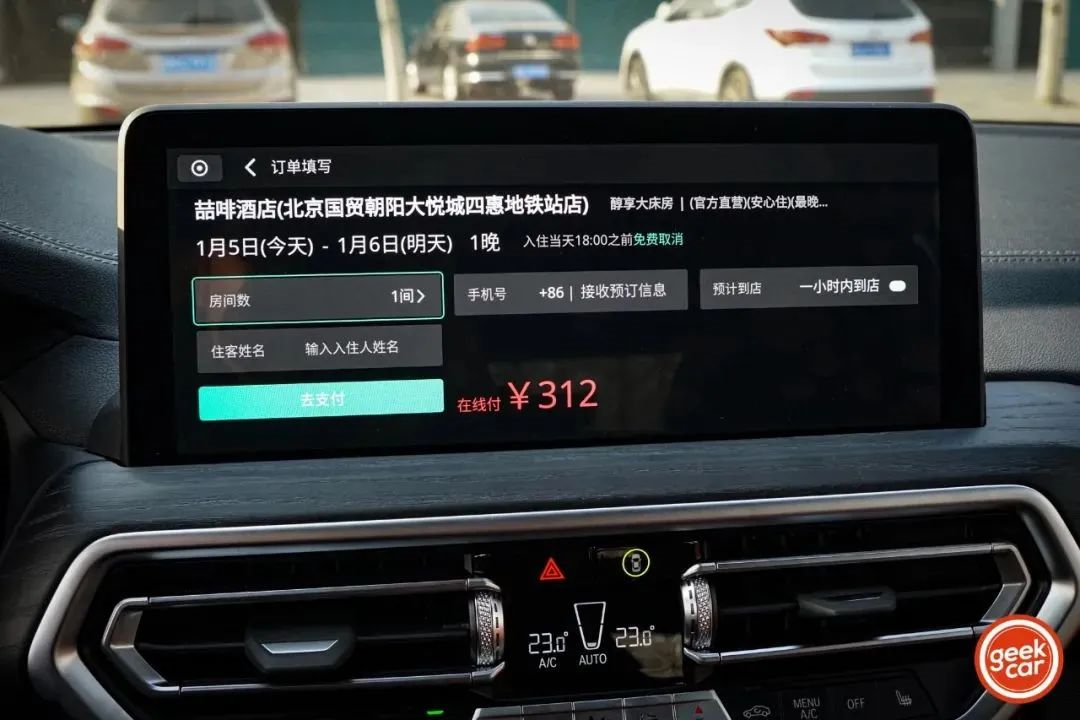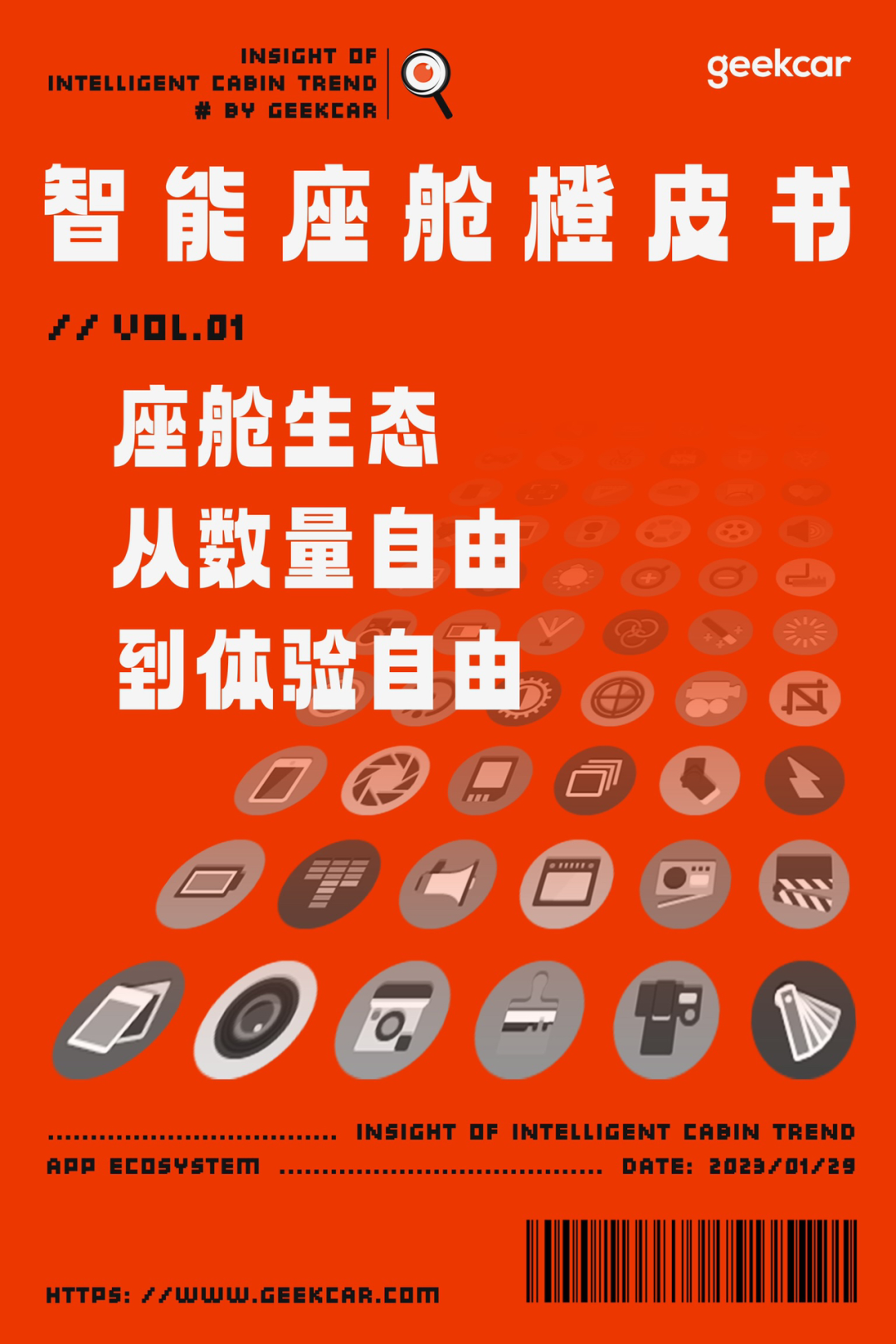Author: Michelin
Ever since the concept of the “third space” was introduced to the intelligent cockpit, bringing more ecology into the car and providing rich ecological experience on board has become the default pursuit in the industry. In the past few years, from the early CarPlay to customized in-car applications, from small scenarios to super desktops, while the cockpit ecology is gradually becoming richer, the focus is also changing.
In a word, the cockpit ecology is gradually evolving from the pursuit of freedom in quantity to the pursuit of freedom in experience.
Polish the experience for high-frequency demands, offer choices for low-frequency ones
If we make a comprehensive statistics on the different demands of users for cockpit applications, we can roughly get a normal distribution curve.

The highest part of the curve corresponds to navigation, music and audio, short and long videos and so on, they cover almost 90% or even more than 95% of the demands of most users, and are the absolute high-frequency demands. The infinite extension on both sides of the curve corresponds to the personalized demands of different users, which is like the long-tail effect of the cockpit ecology. Thousands of people have thousands of different needs, they may be pseudo-demands for most people, but may be the real demands for a small part of people.
Faced with these two types of demands, there are different trends.
First of all, high-frequency demands are still the absolute focus of the cockpit ecology and where all OEMs put efforts in. More concise and adaptable interaction design, richer ecological choices have become the means to polish the experience of high-frequency applications.
In 2021, Mercedes-Benz first introduced the concept of “zero-level interaction” into the human-machine interaction system of the new generation MBUX. If we can only see the “zero-level interaction” design in a few models represented by the Mercedes-Benz S-Class by the end of 2021, then in 2022, more and more brands and models are trying to simplify the in-car interaction and explore the “zero-level interaction” design for navigation, music, and other common functions.
 # Navigation as Desktop and Floating Window Design
# Navigation as Desktop and Floating Window Design
Represented by XPeng G9, common cards such as navigation and music are adjusted to the leftmost side of the central control screen, making it easy for the driver to operate when driving. In addition, navigation is equipped with “One-Click Charging Station” and “One-Click Home” functions, which can be completed through shortcut keys on the homepage without entering the sub-menu, realizing a single-function “zero-level interaction.”

Harmony Cockpit
Represented by AITO AITO M7 and Avita 11, the Harmony Cockpit customizes the frequently used functions on the desktop bottom through the Dock Bar, which enables the “one-click playback of music” function and others.
Standardized UX/UI Design for Automotive Applications
In addition to simplifying the interaction hierarchy, customizing the UX/UI design for automotive applications has become an industry convention. Speech interaction is widely used, and visible and speakable functions such as navigation and music are standard features of a competitive smart cockpit.
In addition to the improvement in user experience, more and more brands are providing richer options for common applications such as navigation and audio.
For example, NIO, known for its “restrained” ecological application in the “Intelligent Cockpit Information Bureau,” has offered two customizable music applications, QQ Music and Netease Cloud Music, as well as various video applications such as iQiyi, Tencent Video, Bilibili, and Migu Video in the cockpit in 2022, whereas, in its ecological system, Li Xiang provides all three major navigation services from Baidu, Alibaba and Tencent so that users can continue their app preferences and usage habits from their mobile phones.


Next, the demand for low-frequency needs in the cabin will still focus on providing functions, and optimize the experience by providing as many choices as possible.
It is not easy to solve the “long tail effect”. Facing the time, energy, and development costs required for customizing in-car applications, the limited storage space and system memory of the cabin, and the huge and diverse small-scale needs that are difficult to coordinate, car companies are destined to make trade-offs. These types of needs are also handed over to more agile, efficient, and lightweight on-board methods, such as the in-car small scenarios / small programs commonly used in the industry in the past, or the HarmonyOS Super Desktop that was launched in 2022.
Taking Tencent’s small scenarios as an example, based on the micro-program architecture open platform, the on-board speed has been shortened to 1-2 months, supporting cross-platform, cross-terminal, and multi-system use, which is more “lightweight” than application customization. However, the shortened development time and cost are still not low. This has led to unsatisfactory experiences for small scenarios / small programs in the past, with inconsistent interaction interfaces and logic, and no integration with basic functions such as voice, and many only providing display functions for first- and second-level menus. More in-depth functions still have to be operated on mobile phones, which affects the integrity of the in-car experience.

In 2022, this situation has improved in some brands. Taking the BMW iX3 as an example, the UX and UI design of the small scenarios within the cabin are consistent with the in-car system, and each application in the small scenarios can be called through the voice assistant. The functions are also more complete, and functions similar to “Ctrip Travel” can complete the entire process from hotel inquiry, room selection to online booking.“`

Of course, OEMs and suppliers have invested more in optimizing the experience in similar ways.
In the face of low-frequency demand solved by small scenes, the investment and strategies of each OEM are different,
directly affecting the experience of small program/small scene applications.
The second way to solve the “long tail effect” of the cockpit ecosystem is the super desktop provided by HarmonyOS 3.0.
The Super Desktop uses the characteristics of HarmonyOS distributed architecture to directly move the mobile phone desktop up.
After saving the time and investment cost of custom development when the application gets on the car,
Super Desktop can provide more choices for niche applications,
extend the integrity of App functions on mobile phones, and retain interaction experience on mobile phones.

Why is the Super Desktop a weapon to solve the “long tail effect” of the cockpit ecosystem?
First of all, if you try to navigate, play music and other common applications with Super Desktop,
the experience you get may only be passable, not superior among today’s intelligent cockpits.
This is because navigation, music, and other common applications on the car terminal are generally deeply customized according to
the needs and interactive logic of the car scene, and have been well optimized.
However, the significance of Super Desktop does not lie in this.
The boarding of Super Desktop is not to replace these high-frequency car-carrying applications,
but to meet personalized needs that are difficult to uniform on-board and vary from person to person,
which is the “long tail effect” of the cockpit ecosystem defined earlier.
In solving the “long tail effect” of the cockpit ecosystem, the Super Desktop has unique advantages.

First, it reduces the threshold for application boarding and maximizes the richness of the cockpit ecosystem.
In the process of boarding applications, whether it is deeply customized car-mounted applications or lightweight small scenes/small programs,
OEMs and developers usually need to consider two issues before boarding:
Does the car have the required scene? How to balance the use rate of the car and the development cost?
Many niche applications are advised not to board as a result of these two multiple-choice questions before boarding.
“`Using the distributed architecture and multi-end deployment capabilities of the HarmonyOS, as well as the function of directly moving the mobile phone desktop to the car, the super desktop puts the choice of “whether we need it” into the user’s hand. Additionally, the 1+8+N device layout of the HarmonyOS also provides a large ecological population for the super desktop.
Taking the AITO 问界 M7, the first car installed with the super desktop function, as an example, there are 37 customized in-car applications covering common scenarios such as navigation and music. Meanwhile, rare application demands can be met by the super desktop, which currently enables seamless installation of over 200 apps. For users with demands, the over 200 mobile apps can come in handy; for users without current demands, the super desktop will not occupy the computational power and memory of the car’s cockpit system, which does not affect the smooth use of the car’s infotainment system.
Secondly, the integrity of the app is maintained after installation. Due to the considerations of app development cycle, cost, and user activity on the car side, many small programs and scenes only provide one or two levels of menus, browsing functions for subscription-type apps, while their subscription and payment processes need to be operated on mobile phones. With the Super Desktop, mobile apps can be directly installed on a car system and directly called on the car screen to complete the browsing to subscription and payment processes, providing users with a complete app experience.
Thirdly, the interaction threshold is lower and conforms to the mobile operation habits. Both the HarmonyOS in-car system and the Super Desktop are designed to resemble the UI of mobile devices such as smartphones and tablets, while the Super Desktop directly mirrors the layout and interaction logic of mobile apps, allowing users to operate without much difficulty.
Of course, the proportions of vertical screen mobile phones can not be fully adapted to the horizontal screen of a car system, and some layouts and functional settings of mobile apps may not necessarily be fully suitable for in-car use, leaving room for improvement.

Fourth, the content on mobile and in-car systems is continuous, and can achieve seamless transition of content. How to connect the third space of the cabin with the first and second spaces has been a problem for many people. In addition to the conventional car-home interconnection functions, how to seamlessly connect users’ ongoing navigation, music audio, and ongoing conference calls in the car to the mobile phone is also a requirement for many people.
In this regard, HarmonyOS and Super Desktop use the advantages of the system to achieve seamless transitions between different devices such as car systems, mobile phones, and watches. For example, Petal Maps supports seamless transitions between mobile and in-car applications. After getting off the car, unfinished navigation on the car can be continued on the mobile phone, and the music audio that was played in the car can also be continued on the mobile phone.

Admittedly, Super Desktop still has room for improvement in terms of user experience at this stage. On the one hand, as mentioned earlier, there are problems with the interface layout of mobile apps and the adaptability to landscape car screens. The split-screen function of the HarmonyOS system itself can alleviate this problem to a certain extent; however, the interaction logic and interface of various applications in the Super Desktop are not unified, which reduces the application’s onboard threshold and affects the experience to a certain extent.
On the other hand, Super Desktop is limited to the use of HarmonyOS on car and mobile devices at the same time. The built-in distributed architecture and huge ecology of HarmonyOS are Super Desktop’s advantages, and to a certain extent, they also limit its applicability within the industry. However, the existence of Super Desktop still provides new possibilities for the richness and freedom of the cabin ecosystem.
Conclusion
For the cabin ecosystem, in the past few years, car companies have been making choices: large and comprehensive or small and refined, which seems to be impossible to achieve at the same time.
As users’ ecological needs gradually become rational and stable, as car companies continue to invest in ecology, and with the introduction of new functions such as Super Desktop, the cabin ecosystem is gradually integrating “large and fine”, and moving towards the direction of balancing both quantity and experience freedom.# 我的个人介绍
基本信息
- 姓名:张三
- 性别:男
- 年龄:25岁
- 手机:13512345678
- 邮箱:zhangsan@example.com
教育经历
- 本科:XX大学 计算机科学与技术专业
- 研究生:XX大学 信息与通信工程专业
工作经历
公司A (2018年6月-2019年12月)
- 职位:前端工程师
- 工作内容:
- 前端页面开发
- 前端代码维护
- 跨端页面适配
- 知识技能:
- HTML5/CSS3/JavaScript
- React/Vue.js 等前端框架
- Node.js
公司B (2020年1月-至今)
- 职位:全栈工程师
- 工作内容:
- 后台接口开发
- 数据库设计与维护
- 前端页面开发
- 知识技能:
- Java/SpringBoot
- MySQL/MongoDB/Redis 等数据库
- HTML5/CSS3/JavaScript
This article is a translation by ChatGPT of a Chinese report from 42HOW. If you have any questions about it, please email bd@42how.com.
